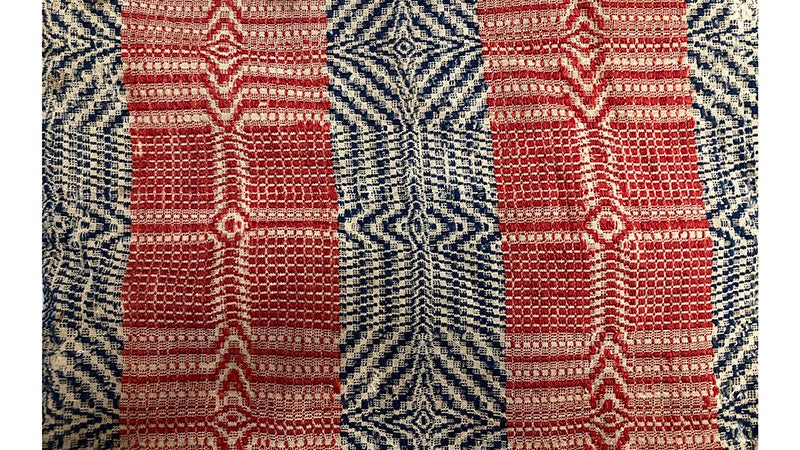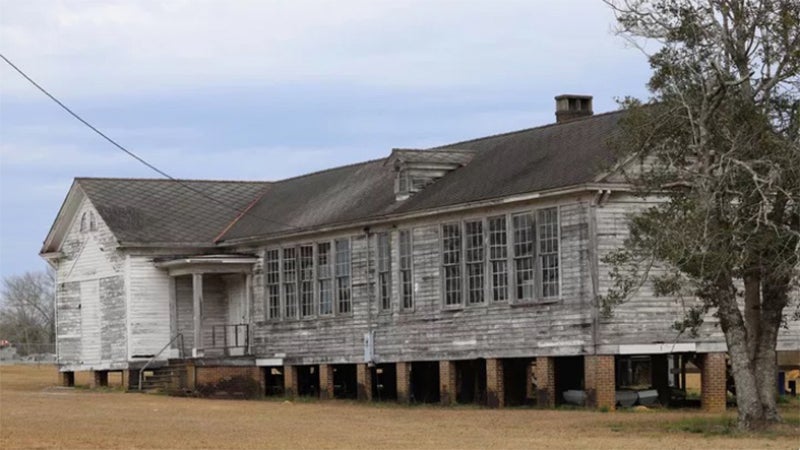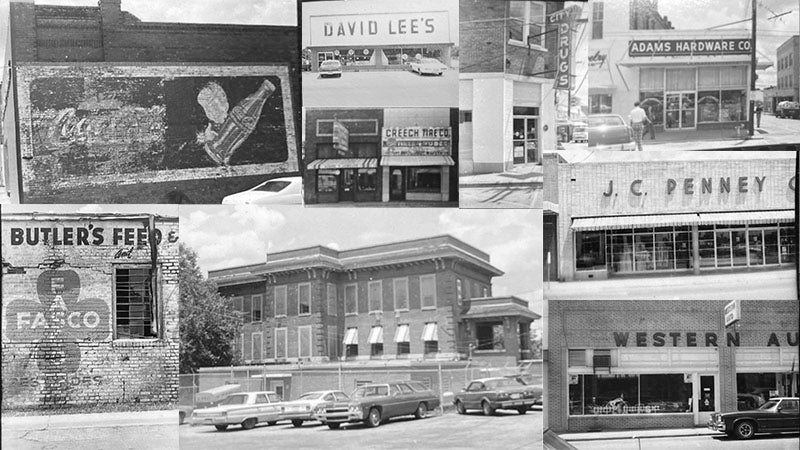Remember when: ‘Golf links,’ pool at early club
Published 1:14 am Saturday, July 22, 2017
RW – the Andalusia Country Club property was purchased from Uncle “Aus” Prestwood. During the early years of the club, the golf course called the “golf links,” was nothing to compare to what the course is today. According to Sidney Waits and his local history page on the internet, he states that there was no club house during the early years of the club. He fondly recalls the Caddy House, the ravine hole, “cardiac hill,” and the building of the first swimming pool around tournament time in May.
“All of the boys and girls were there dangling their feet in the pool awaiting the call to enter the pool. I was among those boys present. Polly (Wilder) was also there, but I didn’t know her then. I guess the most interesting thing about the new pool was the underwater lights that illuminated the water for swimming at night. My father, George S. Waits, Sr., was elected the first president of the club. He had been instrumental in getting the property purchased and helping with the organizing of the Andalusia Country Club.”
Miss Polly Wilder and Mr. Sidney Waits were married in June 1947. They recently celebrated their 70th anniversary. Sadly, Polly passed away this week at the age of 92. Polly, mother of two, Mary Evelyn and George, was an ardent supporter of all of Sidney’s historical endeavors including the tedious indexing and compiling of information on the old Magnolia Cemetery where she was laid to rest. Their 1995 book, “An In Depth Index of Magnolia Cemetery,” can be found at the Andalusia Public Library.
There are many inquiries for genealogical information from out-of-towners who phone the library, the chamber of commerce, the city hall, historical society members, and sometimes churches which have cemeteries beside them. Sidney with Polly at his side encouraging and supporting him has been a wealth of knowledge about old times in Andalusia with his published articles in The Andalusia Star-News and in his many booklets of historical accounts on various topics including Devereux Hill, the Horse Shoe Lumber Company, the E. L. More Memorial Bridge over the Conecuh River, The Fox Theatre, the Montezuma Village, the Three Notch Museum, and the Historic Bradley Family Cemetery in Loango to mention only a few of the stories he has written about.
Even in Waits’ 1991 book “From the Halls of Montezuma, Sketches of early Covington County and Andalusia, Alabama History,” he gratefully dedicates it “in honor of his faithful wife, Polly Lou Wilder Waits, who has always been an inspiration and helpmate.”
RW – East Three Notch Street was just two lanes. It was not that long ago. Trees that overhung the street had to be cut down to make a four-lane street. It is not so shady now as it used to be. The last old oak tree that I remember standing was on South Three Notch Street on the side right in front of where Bob and Denise Brooks live. Some say that was the last “Three Notch” tree!
RW – Gantt was called Hamptonville? I surely don’t have any remembrance of that. The Covington Times in 1892 called it that, however, no one around here is still living that was living then to my knowledge. In 1899 when the Searight railroad line extension into downtown Andalusia was made, Gantt was still called Cristine. The Covington Expositor News reported on September 20, 1899, “While there is only a false bridge across the river at present (in Cristine), a modern steel bridge will be put in at an early date.”
Sidney Waits stated in his book that the name of the town “Cristine” was after a pretty school teacher by that name.
“After she moved away, they named the town Gantt to honor the family of Gantts that settled in the area and contributed much to its early growth and development.”
The newspaper also reported that the Commissioner’s Court of Covington County was letting out bids for a new bridge over the Conecuh River. This “iron bridge” was to be built at the “Sand Landing” about a half mile above Bullock Falls (believed to be the original bridge just north of the present day bridge at River Falls).
RW – Dr. Ray Evers was making a house call in the River Falls area probably in the 1950s. At that time, the present modern bridge over the river had been built. Because it was late at night and Dr. Evers was probably awakened from a deep sleep to go tend to a sick patient, he followed the old road driving his car at a fast rate of speed where the old bridge used to be. That road path was in close proximity to the old Riverside Inn. His car somehow jumped the river and just made it across. I recall overhearing discussions of that incident many times in my early life, because Dr. Evers had delivered me into this world. Since he was one of our family doctors, that story rehashed over and over was quite tantalizing and amazing. I always think about it when I cross the bridge and glance over to the right side!
RW – another story of an Andalusia doctor making a similar house call to River Falls did not turn out quite so well. Dr. Leban Underwood, Jane Wiggins’ and Flora Howell’s father, accidentally ran into the abutment on the bridge. He was taken to the hospital where he told the nurses to call his family to come quickly, because he knew he was dying. “I am holding my liver in my hands,” he said. That was a real tragedy for the city and county to lose such an extraordinary physician to the tragic accident. He was Chief Surgeon of the Covington County Hospital. His untimely death came on May 13, 1934. Polly Wilder Waits’ grandfather, Dr. Thomas Quincy Ray, is known for organizing and operating the Andalusia City Hospital, the forerunner of the old Covington Memorial Hospital. He served two four-year terms on the Andalusia City Council and was chairman of the Street Committee when the curbs and sidewalks were laid in the downtown. At one time, Dr. T. Q. Ray was one of Andalusia’a oldest practicing physicians. Many babies were named for him! He received his medical degree in 1895 from the Atlanta Medical College which was a part of Emory University at that time.
Back to the Waits’ Magnolia Cemetery book, let me quote some lines from their book.
“Magnolia Cemetery is the oldest known cemetery in the City of Andalusia. The plaque at the entrance indicates it was opened in the mid-1850s, and this is correct insofar as we can determine. The founding fathers acquired the 40 acres that made up the original town, and they called for the construction of a courthouse on the land. They also reserved a space near the courthouse for a community church…A church was erected near the courthouse, and a cemetery was subsequently begun directly behind the church. (The original First Baptist Church was built to the south of the present cemetery on the land that is now a parking lot for the courthouse.)”
“It is surprising how many graves are not marked…Time has erased many markers to decay beyond recognition, and many graves that had wooden markers have long since disappeared… More than one person appears to be buried in at least a couple of graves. Several graves are above ground in individual or group mausoleums…There are many people buried in Magnolia where there is no indication of a grave – no marker – no slab – not even a brick…We have found 318 of these unmarked burials…The old part of the cemetery contains the graves of many of our founding fathers and substantial citizens…So much of our history is now in old Magnolia – horse traders, bankers, doctors, lawyers, veterans of wars, and people from all walks of life who dot its surface. One could spend a lifetime observing and studying the various monuments and reading the epitaphs and inscriptions on the tombstones.”
Sidney Waits states in the book that one of his grandfathers and grandmother Waits as well as his father, G. S. Waits, Sr., his two brothers along with their wives, and other Waits relatives are buried in Magnolia.
“Polly is equally proud that much of her heritage lies buried there, her paternal and maternal grandparents, the Wilders and the Rays, and her parents are asleep in Magnolia’s soft clay. Other aunts and uncles are also buried there.”
We are thankful for the information that Sidney and Polly Waits have made available in the Magnolia Cemetery book which has a part in preserving the information for future generations. They expressed appreciation to citizens who assisted to some degree with the indexing. They are as follows: Janelle Wiggins Franklin, Bera Hudson Hall, Bill Howell, Curtis Thomasson, and Jane Underwood Wiggins. All of these are deceased now except for Mr. Thomasson who regularly and faithfully writes his genealogy column in The Andalusia Star News.
This column is in tribute to the late Polly Wilder Waits who passed away this past week. I am reminded of a passage which I believe is fitting for this Southern lady who was greatly admired, loved, and respected by many – “And I heard a voice from heaven saying unto me, Blessed are the dead which die in the Lord from henceforth, saith the Spirit, that they may rest from their labours and their works do follow them.” Revelation 14:13
When you next ride by Magnolia Cemetery, you just might decide to drive through the streets where you will notice the lovely Magnolia, Youpon, and Cedar trees which speckle the grounds along with the historic cemetery artwork on the many tombstones. Maybe you will REMEMBER WHEN you read this account about its history and the quiet resting spot “nestled in the midst of a busy and noisy community.”
Sue Bass Wilson is a local real estate broker and long-time member of the Covington Historical Society. She can be reached at suebwilson@andycable.com.





